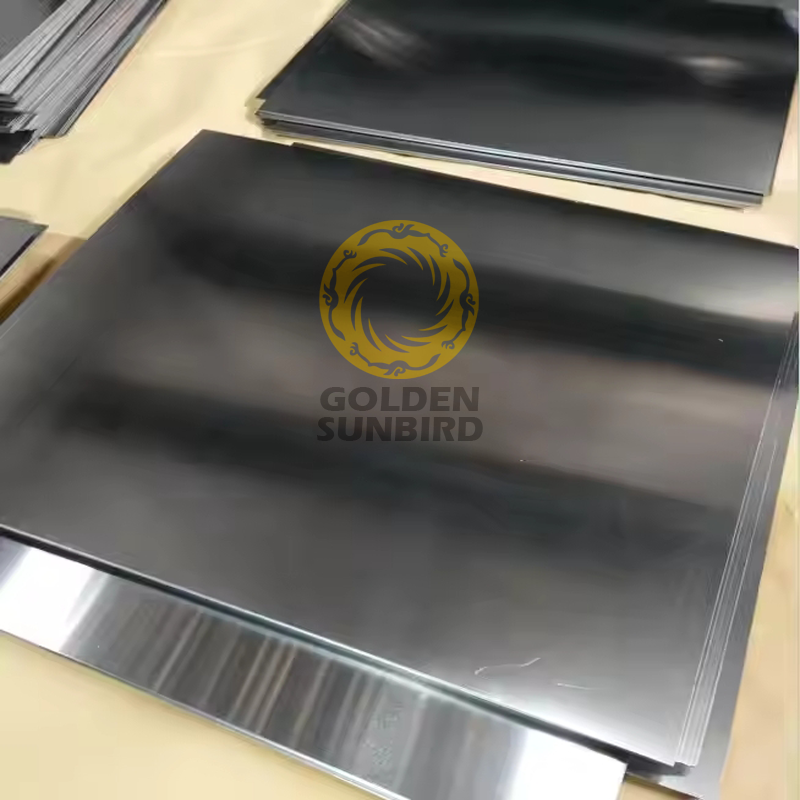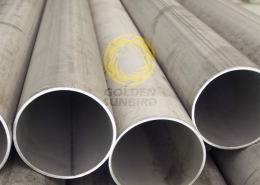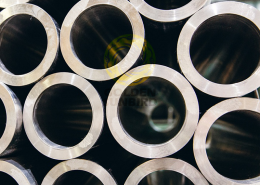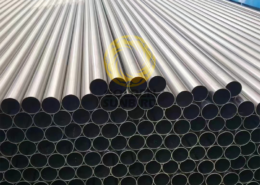ASTM B386 Molybdenum and Molybdenum Alloy Plate and Sheet
- Mo 360—Unalloyed VAC Mo
- Mo 361—Unalloyed P/M Mo
- Mo Alloy 363—VAC Mo-0.5Ti-0.1Zr (TZM) alloy
- Mo Alloy 364—P/M Mo-0.5Ti-0.1Zr (TZM) alloy
- Mo 365—Unalloyed VAC Mo, Low carbon
- Mo Alloy 366—VAC Mo-30W alloy
Features
ASTM B386/B386M Molybdenum and Molybdenum Alloy Plate, Sheet, Strip, Foil
Molybdenum 360—Unalloyed vacuum arc-cast molybdenum.
Molybdenum 361—Unalloyed powder metallurgy molybdenum.
Molybdenum Alloy 363—Vacuum arc-cast molybdenum-0.5 % titanium-0.1 % zirconium (TZM) alloy.
Molybdenum Alloy 364—Powder metallurgy molybdenum-0.5 % titanium-0.1 % zirconium (TZM) alloy.
Molybdenum 365—Unalloyed vacuum arc-cast molybdenum, low carbon.
Molybdenum Alloy 366—Vacuum arc-cast molybdenum-30 % tungsten alloy.
Chemical Composition (wt.%)
| Elements | Molybdenum 360 & 365 | Molybdenum 361 | Molybdenum Alloy 363 & 364 (TZM) | Molybdenum Alloy 366 |
| C | 0.030 max (360), 0.010 max (365) | 0.010 max | 0.010–0.030 | 0.030 max |
| O | 0.0015 | 0.007 | 0.003 | 0.0025 |
| N | 0.002 | 0.002 | 0.002 | 0.002 |
| Fe | 0.01 | 0.01 | 0.01 | 0.01 |
| Ni | 0.002 | 0.005 | 0.002 | 0.002 |
| Si | 0.01 | 0.01 | 0.01 | 0.01 |
| Ti | – | – | 0.40–0.55 | – |
| W | – | – | – | 27–33 |
| Zr | – | – | 0.06–0.12 | – |
| Mo | Balance | Balance | Balance | Balance |
Mechanical Properties
| Type/Temper Condition | Thickness Range (in.) | Tensile Strength (min, ksi) | Yield Strength 0.2% offset (min, ksi) | Elongation 2 in. or 50mm min (%) |
| Molybdenum 360, 361, 365 | Various ranges | 95 – 115 | 80 – 95 | 1 – 18 |
| Molybdenum Alloy 363, 364 | 0.010 to 1.5 | 100 – 120 | 85 – 100 | 8 – 10 |
| Molybdenum 360 (RX) | 3/16 to 1.5 | 55 | 25 | 20 |
| Molybdenum Alloy 363, 364 (RX) | 3/16 to 1.5 | 75 | 45 | 10 |
Note: RX indicates an essentially fully recrystallized temper. SR stands for stress-relieved. The range of thickness and properties varies significantly, so these tables consolidate the data for general reference. The actual specifications might require consulting the document for precise values, especially where ranges are provided.
Technical Specifications
| Specification | Value |
| Standard | ASTM B386 Molybdenum and Molybdenum Alloy Plate and Sheet |
| Grade | Molybdenum 360, Molybdenum 361, Molybdenum Alloy 363, Molybdenum Alloy 364, Molybdenum 365, Molybdenum Alloy 366 |
| Condition | As rolled, as cleaned, as machined, or as ground finish |
| Type | Plate, Sheet, Strip, Foil, and Ribbon |
| Plate | Thickness: 2-30mm x Width: 600-700mm x Length: 1000-2000mm |
| Sheet | Thickness:0.05-2mm x Width: 200-600mm x Length: 1000-2000mm |
| Drawing Grade | Sheet thickness: 0.4-1.5mm |
| Strip | Thickness:≤4.75mm x Width:≤127mm |
| Foil | Foil Thickness:≤0.13mm |
| Inspection Certificate | EN 10204 Type 3.1 (Mill Test Certificate), EN 10204 Type 3.2 (Witness Testing or 3rd Party Inspection) |
| Test | Surface Bend Test, Flatness Test |
Packing
Packed in plywood boxes or on pallets.
Application
Molybdenum 360 and Molybdenum 361
Applications: They are used in high heat resistance, mechanical strength at elevated temperatures, and low thermal expansion. Typical uses include furnace parts, electronic and semiconductor devices, aerospace components, and electrical contacts. Their excellent corrosion resistance to molten metals makes them ideal for crucibles and other equipment used in metal production processes.
Molybdenum Alloy 363
Applications: This alloy is used in high-temperature environments similar to pure molybdenum but requires enhanced mechanical stability. Its applications include aerospace components, nuclear energy reactor parts, and heat sinks. It’s also used in the automotive industry for parts subjected to high temperatures.
Molybdenum Alloy 364
Applications: Its enhanced properties make it suitable for aircraft parts, missile parts, and components in the nuclear industry. It also serves to fabricate sputtering targets used in the coating of materials.
Molybdenum 365
Applications: This grade is used for its purity and excellent thermal and electrical conductivity in lighting, electronics, and high-temperature furnaces where contamination must be minimized.
Molybdenum Alloy 366
Applications: Designed for environments that require a combination of high strength, resistance to thermal creep, and good conductivity. Typical uses might include components in the power generation industry, aerospace engineering, and advanced electronics manufacturing.








